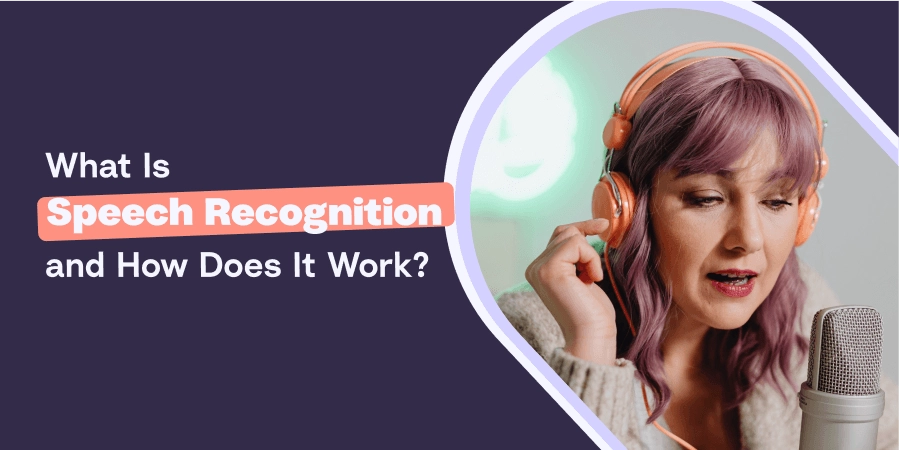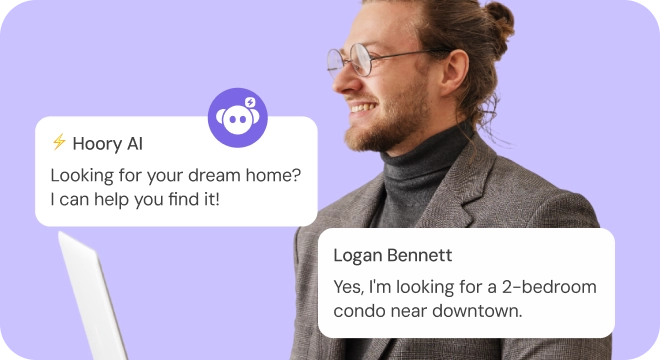What Is Speech Recognition and How Does It Work?
• Customer Support
• FastBank

With modern devices, you can check the weather, place an order, make a call, and play your favorite song entirely hands-free. Giving voice commands to your gadgets makes it incredibly easy to multitask and handle daily chores. It’s all possible thanks to speech recognition technology.
Let’s explore speech recognition further to understand how it has evolved, how it works, and where it’s used today.
What Is Speech Recognition?
Speech recognition is the capacity of a computer to convert human speech into written text. Also known as automatic/automated speech recognition (ASR) and speech to text (STT), it’s a subfield of computer science and computational linguistics. Today, this technology has evolved to the point where machines can understand natural speech in different languages, dialects, accents, and speech patterns.
Speech Recognition vs. Voice Recognition
Although similar, speech and voice recognition are not the same technology. Here’s a breakdown below.
Speech recognition aims to identify spoken words and turn them into written text, in contrast to voice recognition which identifies an individual’s voice. Essentially, voice recognition recognizes the speaker, while speech recognition recognizes the words that have been spoken. Voice recognition is often used for security reasons, such as voice biometrics. And speech recognition is implemented to identify spoken words, regardless of who the speaker is.
History of Speech Recognition
You might be surprised that the first speech recognition technology was created in the 1950s. Browsing through the history of the technology gives us interesting insights into how it has evolved, gradually increasing vocabulary size and processing speed.
1952: The first speech recognition software was “Audrey,” developed by Bell Labs, which could recognize spoken numbers from 0 to 9.
1960s: At the Radio Research Lab in Tokyo, Suzuki and Nakata built a machine able to recognize vowels.
1962: The next breakthrough was IBM’s “Shoebox,” which could identify 16 different words.
1976: The “Harpy” speech recognition system at Carnegie-Mellon University could understand over 1,000 words.
Mid-1980s: Fred Jelinek's research team developed a voice-activated typewriter, Tangora, with an expanded bandwidth of 20,000 words.
1992: Developed at Bell Labs, AT&T’s Voice Recognition Call Processing service was able to route phone calls without a human operator.
2007: Google started working on its first speech recognition software, which led to the creation of Google Voice Search in 2012.
2010s: Apple’s Siri and Amazon Alexa came into the scene, making speech recognition software easily available to the masses.
How Does Speech Recognition Work?
We’re used to the simplicity of operating a gadget through voice, but we’re usually unaware of the complex processes taking place behind the scenes.
Speech recognition systems incorporate linguistics, mathematics, deep learning, and statistics to process spoken language. The software uses statistical models or neural networks to convert the speech input into word output. The role of natural language processing (NLP) is also significant, as it’s implemented to return relevant text to the given voice command.
Computers go through the following steps to interpret human speech:
-
The microphone translates sound vibrations into electrical signals.
-
The computer then digitizes the received signals.
-
Speech recognition software analyzes digital signals to identify sounds and distinguish phonemes (the smallest units of speech).
-
Algorithms match the signals with suitable text that represents the sounds.
This process gets more complicated when you account for background noise, context, accents, slang, cross talk, and other influencing factors. With the application of artificial intelligence and machine learning, speech recognition technology processes voice interactions to improve performance and precision over time.
Speech Recognition Key Features
Here are the key features that enable speech recognition systems to function:
-
Language weighting: This feature gives weight to certain words and phrases over others to better respond in a given context. For instance, you can train the software to pay attention to industry or product-specific words.
-
Speaker labeling: It labels all speakers in a group conversation to note their individual contributions.
-
Profanity filtering: Recognizes and filters inappropriate words to disallow unwanted language.
-
Acoustics training: Distinguishes ambient noise, speaker style, pace, and volume to tune out distractions. This feature comes in handy in busy call centers and office spaces.
Speech Recognition Benefits
Speech recognition has various advantages to offer to businesses and individuals alike. Below are just a few of them.
Faster Communication
Communicating through voice rather than typing every individual letter speeds up the process significantly. This is true both for interpersonal and human-to-machine communication. Think about how often you turn to your phone assistant to send a text message or make a call.
Multitasking
Completing actions hands-free gives us the opportunity to handle multiple tasks at once, which is a huge benefit in our busy, fast-paced lives. Voice search, for example, allows us to look up information anytime, anywhere, and even have the assistant read out the text for us.
Aid for Hearing and Visual Impairments
Speech-to-text and text-to-speech systems are of substantial importance to people with visual impairments. Similarly, users with hearing difficulties rely on audio transcription software to understand speech. Tools like Google Meet can even provide captions in different languages by translating the speech in real-time.
Real-Life Applications of Speech Recognition
The practical applications of speech recognition span various industries and areas of life. Speech recognition has become prominent both in personal and business use.
-
Technology: Mobile assistants, smart home devices, and self-driving cars have ceased to be sci-fi fantasies thanks to the advancement of speech recognition technology. Apple, Google, Microsoft, Amazon, and many others have succeeded in building powerful software that’s now closely integrated into our daily lives.
-
Education: The easy conversion between verbal and written language aids students in learning information in their preferred format. Speech recognition assists with many academic tasks, from planning and completing assignments to practicing new languages.
-
Customer Service: Virtual assistants capable of speech recognition can process spoken queries from customers and identify the intent. Hoory is an example of an assistant that converts speech to text and vice versa to listen to user questions and read responses out loud. Such tools are often key components of a company’s martech stack, helping streamline customer communication and enhance service efficiency.
Speech Recognition Summarized
Speech recognition allows us to operate and communicate with machines through voice. Behind the scenes, there are complex speech recognition algorithms that enable such interactions. As the algorithms become more sophisticated, we get better software that recognizes various speech patterns, dialects, and even languages.
Faster communication, hands-free operations, and hearing/visual impairment aid are some of the technology's biggest impacts. But there’s much more to expect from speech-activated software, considering the incredible rate at which it keeps growing.

























